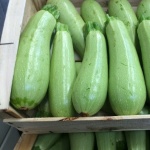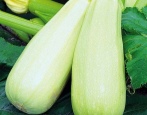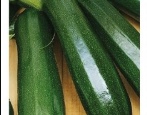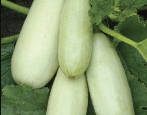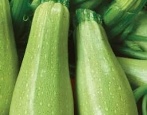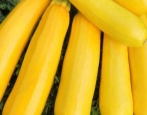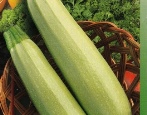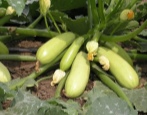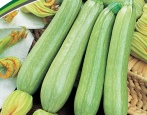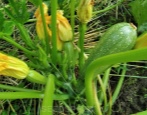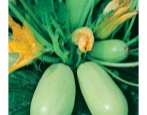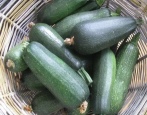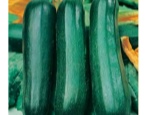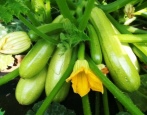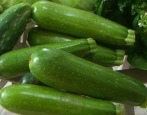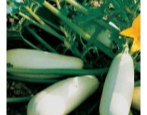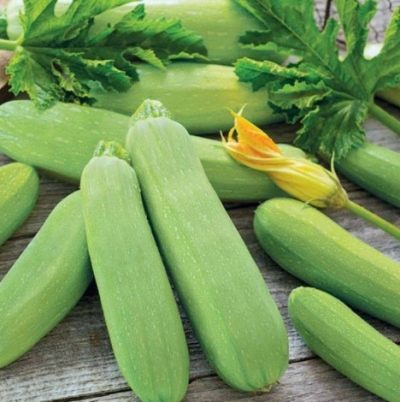
- Authors: Jolanda Kouters
- Name synonyms: Ardendo 174
- Year of approval: 2011
- Ripening terms: early maturing
- The period from germination to harvest: 40-45 days
- Description of the plant: compact
- Leaves: large, green with a mottling of medium intensity, medium dissected
- Fruit shape: in technical ripeness clavate
- Fruit color: light green with dot pattern
- Color of the pulp: light green
Few people know that the simple zucchini that can be seen at any site actually comes from Mexico. But he perfectly took root in our land, in our climate. And this is facilitated by the achievements of modern breeding. The Dutch hybrid Ardendo deserves attention. This compact bushy type of zucchini is able to bear fruit in large quantities in almost any weather.
Breeding history
The famous Dutch agricultural company Enza Zaden has been creating hybrids and varieties of vegetable crops since 1938. The author of the Ardendo zucchini is Jolanda Kouters. In 2008, an application for admission was submitted, and after the conducted variety trials in 2011, a hybrid variety called Ardendo 174 (Ardendo 174) was included in the lists of the state register and allowed for cultivation in the North Caucasus region.
Description of the variety
Zucchini Ardendo is a white-fruited, high-yielding hybrid with excellent qualities. It has an excellent presentation. These factors, as well as long-term fruiting, ensure the popularity of the culture. It also has a high resistance to most diseases, as well as significant stress resistance.
Characteristics of the appearance of plants and fruits
Ardendo is a small and compact shrub plant. The foliage is large, medium-dissected green plates have visible spotting.
Zucchini fruits at the stage of technical ripeness have a clavate shape, they are slightly ribbed, colored in light green tones, a pattern in the form of dots is noted on the surface. Zucchini has an average length and diameter. The average weight of each fruit is 500-600 grams, and the length is 17-19 centimeters.
Purpose and taste
Ardendo fruits are characterized by light green flesh and their taste is noted as excellent. The composition of the fruit contains:
- dry matter - 5.0-5.1%;
- total sugar - 2.7-2.9%.
The seeds inside the fruit are medium in size, elliptical in shape, their color is cream. The product is used in home cooking, is used for all types of processing, and is also used fresh.
Ripening terms
Early maturing Ardendo hybrids can emerge in 40-45 days, if you count from germination to harvest. The hybrid bears fruit for a long time.
Yield
The yield of fruits of Ardendo zucchini varies depending on the region of cultivation and climatic characteristics, it ranges from 497 to 1452 c / ha. At the same time, the yield from 1 square meter is 5-14 kilograms.
Growing and caring
Zucchini of the described hybrid variety tolerate both rather high and low temperatures equally well. The described culture is demanding for watering, subsequent loosening, as well as top dressing. You should adhere to the landing pattern of 60x60 centimeters.
In the spring, it is possible to use film shelters. The best sowing period is May. In the summer, you can plant the hybrid variety in open ground beds. With the seedling method, the seeds are planted in April.Further, grown seedlings are transferred to open beds in early June, when 2-4 leaves are formed.
As already mentioned, watering should be regular and abundant, especially at the fruiting stage. Pour warm liquid under the root. If necessary, the plants need to be spud. With a large growth of the bush, it is necessary to remove large leaves in order to create an influx of sunlight, as well as nutrients to the ovaries.
It is necessary to harvest 1-2 times a week, this helps the formation and development of all new ovaries.
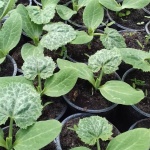
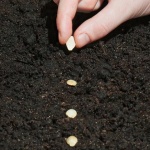
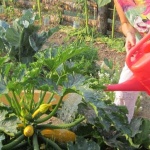
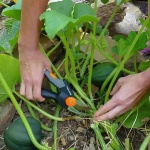
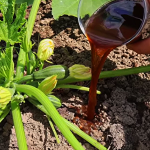
Disease and pest resistance
The Ardendo hybrid variety is resistant to many ailments of squash crops, such as:
- powdery mildew;
- downy mildew;
- melon mosaic virus;
- yellow mosaic virus.
However, we must not forget about the prevention of culture. So, during the growing season, the plant should be treated with such folk remedies as:
- infusion of garlic leaves;
- milk serum.
